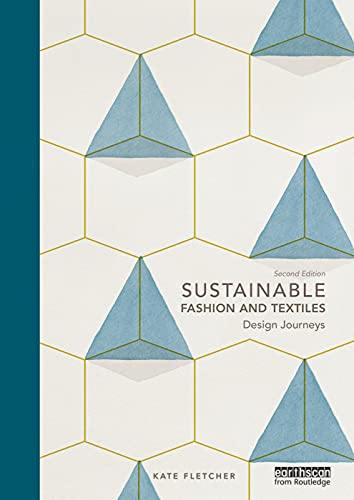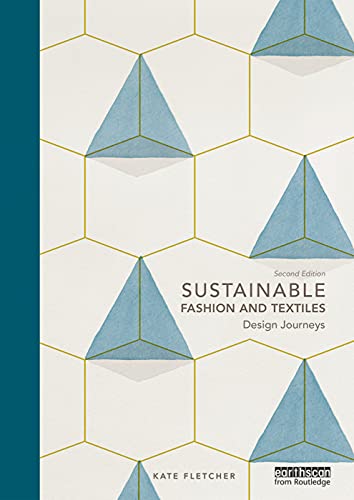Sustainable Fashion and Textiles: Design Journeys is a book that explores the design processes and journeys of sustainable fashion and textiles. It provides insights into the innovative approaches and practices used by designers to create environmentally friendly and socially responsible clothing and fabrics. The book showcases various design projects and case studies from around the world, highlighting the diverse range of sustainable materials, production techniques, and business models in the fashion industry. It examines the challenges and opportunities faced by designers in implementing sustainability principles and offers valuable guidance for aspiring fashion professionals. Sustainable Fashion and Textiles: Design Journeys is a comprehensive resource for anyone interested in the intersection of fashion, design, and sustainability. It encourages readers to rethink their relationship with clothing and textiles, promoting a more conscious and ethical approach to fashion consumption and production. This book serves as a valuable tool for students, researchers, and industry professionals seeking inspiration and knowledge in the field of sustainable fashion and textiles.
Sustainable Fashion: A Journey Towards a Greener Future
In recent years, the fashion industry has experienced a significant shift towards sustainability. With growing concerns about the environmental impact of fast fashion and the exploitation of garment workers, consumers and designers alike are embracing the concept of sustainable fashion. This movement aims to create clothing and textiles that are environmentally friendly, socially responsible, and economically viable.
Sustainability in Design: One of the main pillars of sustainable fashion is the design process itself. Designers are now incorporating eco-friendly materials, such as organic cotton, hemp, and recycled fibers, into their collections. They are also focusing on creating garments that are durable and timeless, reducing the need for constant consumption and disposal.
Furthermore, sustainable fashion is not only about the materials used, but also about the production methods employed. Designers are increasingly opting for ethical manufacturing processes, ensuring fair wages and safe working conditions for garment workers. They are also exploring innovative techniques like zero-waste pattern cutting and upcycling, which minimize fabric waste and extend the life cycle of materials.
Textile Innovation: Paving the Way for a Circular Economy
Another crucial aspect of sustainable fashion is the development of innovative textiles. Traditional textile production is resource-intensive and often involves harmful chemicals. However, researchers and designers are now seeking alternative solutions.
Advancements in Textile Technology: Sustainable textile innovation encompasses a wide range of approaches. From natural dyeing techniques to biodegradable fibers, the possibilities are endless. For example, companies are experimenting with materials made from agricultural waste, like pineapple leaves and orange peels, which can be transformed into sustainable alternatives to leather and synthetic fabrics.
Moreover, the concept of a circular economy is gaining momentum within the fashion industry. This approach aims to minimize waste and maximize resource efficiency by reusing and recycling materials. Designers are exploring ways to create garments that can easily be disassembled and repurposed, as well as implementing take-back programs to ensure proper disposal at the end of a garment’s life.
In conclusion, sustainable fashion and textiles are paving the way for a greener future. Through conscious design choices and innovative textile development, the industry is moving towards a more environmentally friendly and socially responsible model. By embracing sustainability, we can not only protect the planet but also support the well-being of garment workers and promote a more ethical fashion industry.
Sustainable Fashion and Textiles: Design Journeys

Publisher: Routledge; 2nd edition (January 9, 2014)
Language: English
Paperback: 288 pages
ISBN-10: 0415644569
ISBN-13: 978-0415644563
Item Weight: 1.17 pounds
Dimensions: 6.5 x 1 x 9.25 inches


